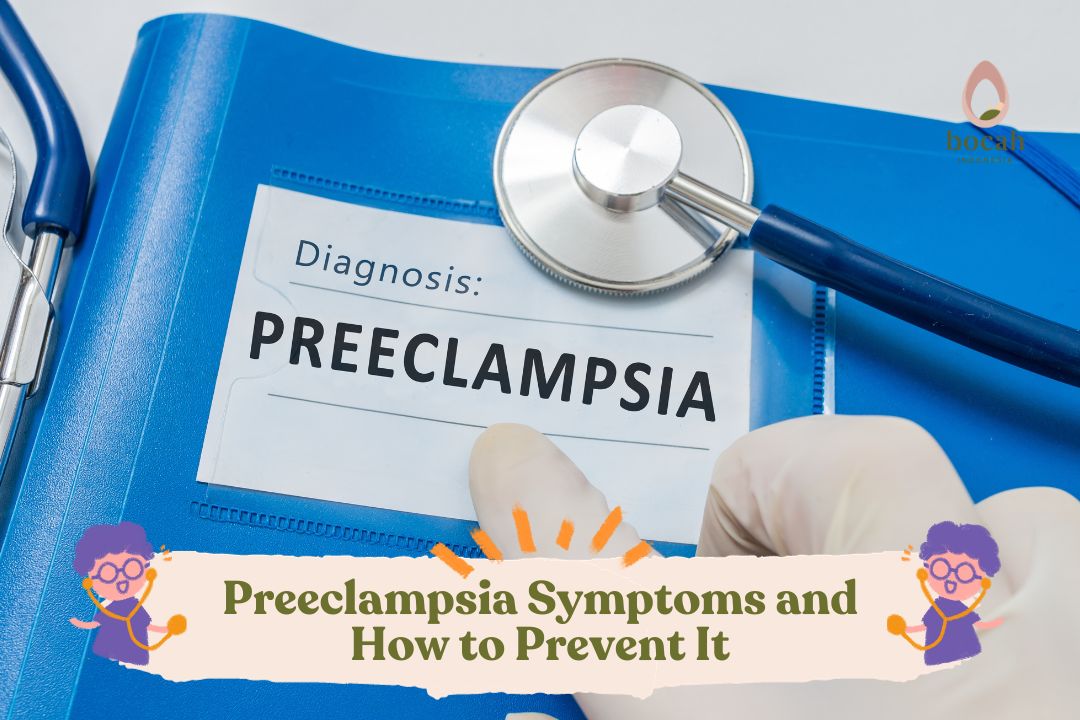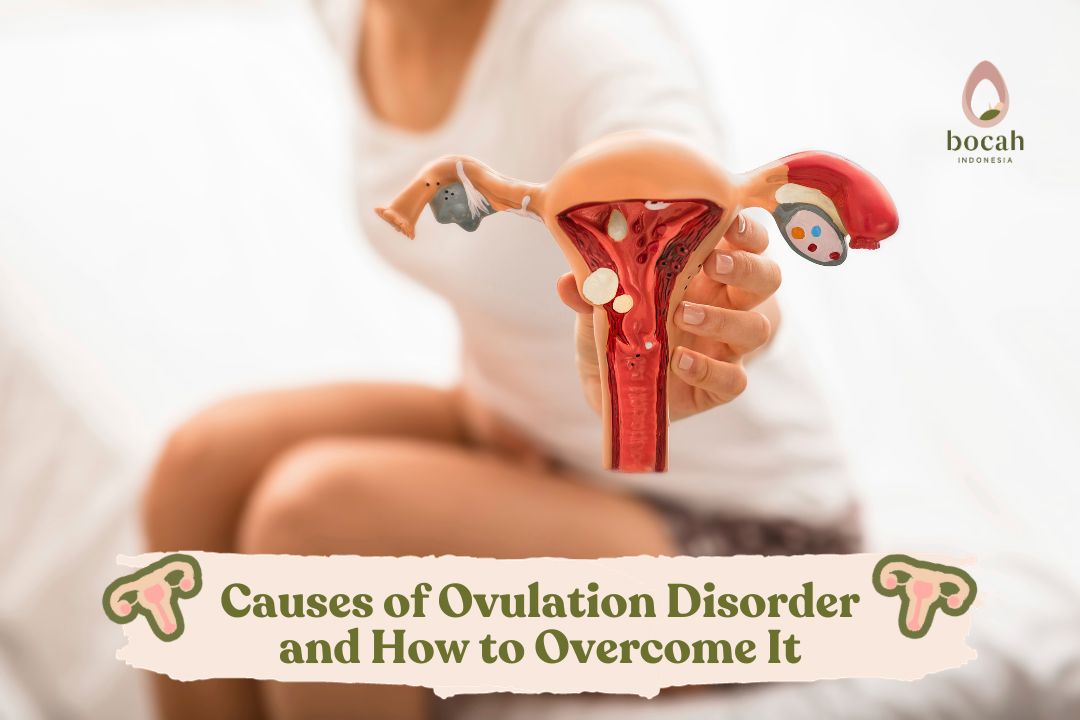Preeclampsia Symptoms and How to Prevent It

Preeclampsia can cause swelling in several areas of the body, such as the soles of the feet, face, eyes and hands. Find out the causes and prevention here.
Pregnant women who experience preeclampsia often have high blood pressure (hypertension) and high levels of protein in the urine (proteinuria).Preeclampsia usually appears after the 20th week of pregnancy.
This condition can also affect other organs in the body and is dangerous for both the mother and the developing fetus. Because of the risk, preeclampsia needs to be treated immediately by a doctor.
Causes and Risks of Preeclampsia in Pregnant Women
Until now, the exact cause of preeclampsia in pregnant women is unknown. But preeclampsia is believed to stem from problems with the health of the placenta (an organ that develops in the uterus during pregnancy and is responsible for providing oxygen and nutrients to the fetus).
Preeclampsia occurs when a woman who previously had normal blood pressure suddenly has increased blood pressure and protein levels in the urine or other problems after 20 weeks of pregnancy.
Tanya Ferly tentang Promil?
Women who have chronic hypertension may also develop preeclampsia. Some women with preeclampsia can have seizures. This is called eclampsia, which is a medical emergency.
Launching from the Centers for Disease Control and Prevention, pregnant women are at higher risk of preeclampsia if:
- First pregnancy.
- Have experienced preeclampsia during a previous pregnancy.
- Have chronic hypertension (chronic high blood pressure), chronic kidney disease, or both.
- Have a history of thrombophilia (a condition that increases the risk of blood clots).
- Being pregnant with twins or three babies at once.
- Being pregnant through an IVF program.
- Have a family history of preeclampsia.
- Have type 1 or type 2 diabetes.
- Obese pregnant women.
- Having or experiencing lupus (autoimmune disease).
- Pregnant more than 40 years old.
In rare cases, preeclampsia may occur after delivery. This is a serious medical condition known as postpartum preeclampsia. It can occur in women with no history of preeclampsia during pregnancy.
The symptoms of postpartum preeclampsia are similar to those of preeclampsia. Usually, postpartum preeclampsia is diagnosed within 48 hours after delivery but can also occur up to 6 weeks later.
Symptoms of Preeclampsia in Pregnant Women
Most pregnant women who experience preeclampsia do not experience any symptoms. Usually, early signs of preeclampsia include high blood pressure, protein in the urine, and water retention (which can result in weight gain and swelling).
Other signs of preeclampsia include:
- Headache.
- Blurred vision or sensitivity to light.
- Dark spots appear in the vision.
- Pain on the right side of the upper abdomen.
- Swelling in the hands and face (edema).
- Shortness of breath.
It is important to have regular check-ups during pregnancy as doctors can anticipate the symptoms of preeclampsia, before it gets worse.
Many people do not realize they have preeclampsia until their blood pressure and urine are checked at a prenatal visit.
Severe preeclampsia may include symptoms such as:
- Emergency hypertension (blood pressure 160/110 mmHg or higher).
- Decreased kidney or liver function.
- Fluid in the lungs.
- Low platelet count in the blood (thrombocytopenia).
- Reduced urine production.
If a pregnant woman has severe preeclampsia, the doctor may require hospitalization under closer supervision or may need to go into labor as soon as possible.
Can Preeclampsia be Prevented?
There is no sure way to prevent preeclampsia, but there are steps that can be taken to reduce the risk of this condition occurring, especially for women with risk factors for preeclampsia.
Some steps that can help reduce the risk of preeclampsia include:
1. Pregnancy Monitoring
Mothers need to be regular with prenatal care and following the instructions of the doctor or midwife is very important. This monitoring allows early detection of preeclampsia symptoms.
2. Healthy Foods
Eating a healthy and balanced diet is an important thing that mothers need to fulfill during pregnancy. Choose foods that are low in salt, to help keep blood pressure within normal limits.
3. Physical Activity
To keep your body fit and healthy during pregnancy, you need to take the time to do enough physical activity. Choose exercises that are light and do not harm the mother and fetus, follow the guidelines of the doctor to help maintain health during pregnancy.
4. Blood Pressure Monitoring
If you have high blood pressure before pregnancy, it is important to control it regularly with the help of a doctor. Do not hesitate to always consult a doctor if you experience unusual symptoms during pregnancy.
5. Limit Caffeine Consumption
Too much caffeine consumption can increase the risk of preeclampsia. Therefore, you should reduce your caffeine consumption during pregnancy to prevent preeclampsia.
6. Take Low Dose Aspirin
For pregnant women with certain risk factors, such as a previous history of preeclampsia, doctors may recommend the use of low-dose aspirin as a preventive measure. The use of the drug should always be done under the advice and supervision of a doctor.
While these measures can help reduce the risk, preeclampsia can still occur even in very healthy pregnant women.
Therefore, medical monitoring during pregnancy is essential for early detection and prevention of preeclampsia.
That’s the explanation related to the risk of preeclampsia that can be experienced by pregnant women. Don’t panic if you experience some of the symptoms above, see a doctor immediately. Hopefully the information above is useful for Daddy and Mommy.
Let’s share this information with other parents. If you are interested in information related to promil or fertility, check out other articles on Bocah Indonesia.
Source:
- American Pregnancy Association. Preeclampsia. Diakses 2023. https://americanpregnancy.org/healthy-pregnancy/pregnancy-complications/preeclampsia/
- The American College of Obstetricians and Gynecologists. Preeclampsia and High Blood Pressure During Pregnancy. Diakses 2023. https://www.acog.org/womens-health/faqs/preeclampsia-and-high-blood-pressure-during-pregnancy
- Merck Manual. Preeclampsia and Eclampsia. Diakses 2023. https://www.merckmanuals.com/professional/gynecology-and-obstetrics/abnormalities-of-pregnancy/preeclampsia-and-eclampsia
- March of Dimes. Preeclampsia. Diakses 2023. https://www.marchofdimes.org/complications/preeclampsia.aspx
- Preeclampsia Foundation. Various Pages. Diakses 2023. https://preeclampsia.org/
- Fetal Development: Step-by-Step Stages in Embryogenesis - 13/11/2024
- Aspermia: Ejaculation Without Sperm - 12/11/2024
- Understanding the Role of the Blastocyst in IVF - 11/11/2024










